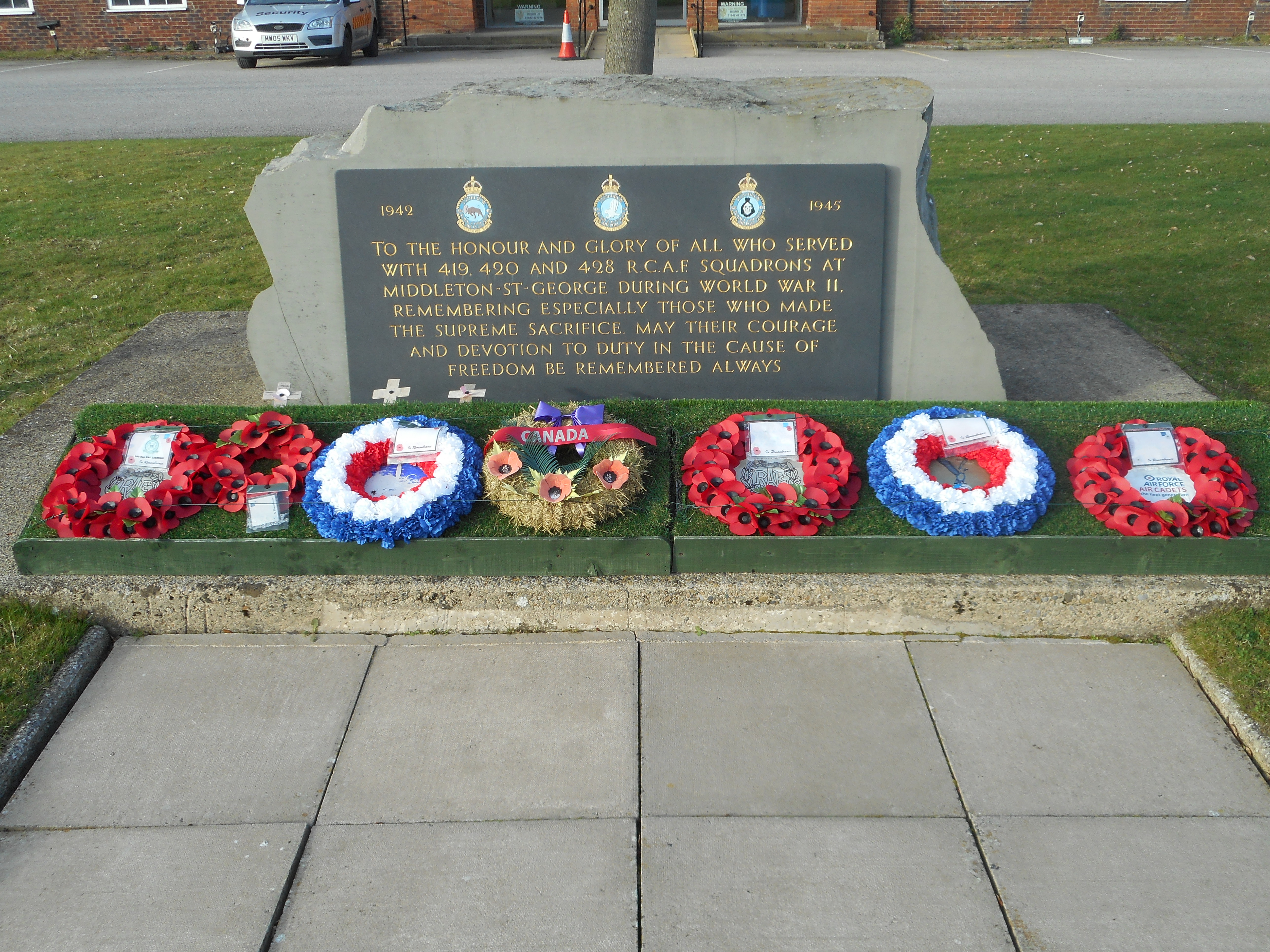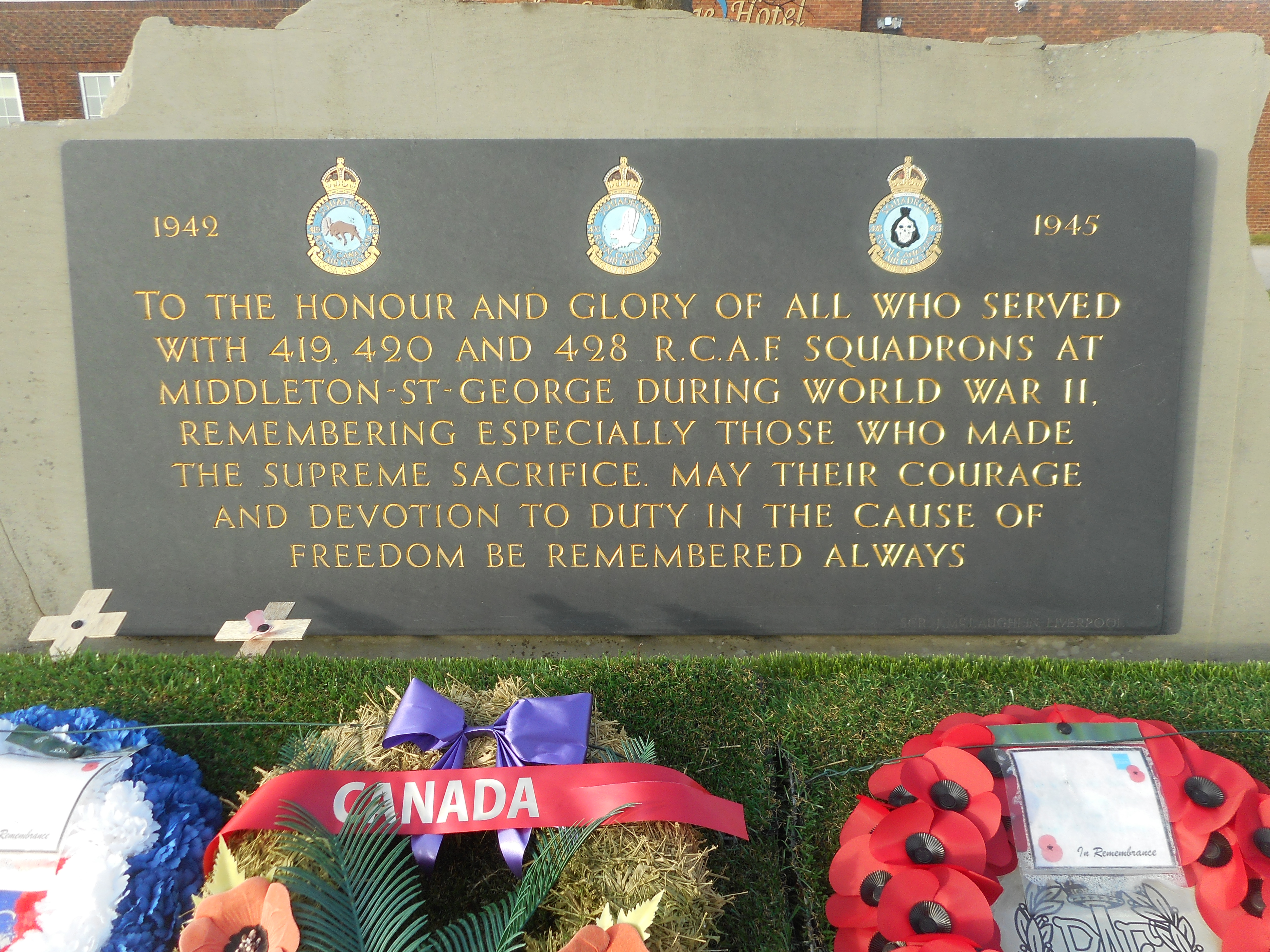Swartz, Stanley John
Personal Information
| Rank | P/O |
| Forename(s) | Stanley John |
| Surname | Swartz |
| Gender | M |
| Age | 22 |
| Date of Death | 05-07-1944 |
| Next of Kin | Son of William F. Swartz and Emma L. Swartz (née Schilkie), of Pembroke, Ontario, Canada. |
Aircraft Information
| Aircraft | Avro Lancaster X |
| Serial Number | KB756 |
| Markings | NA-Q |
Memorial Information
| Burial/Memorial Country | France |
| Burial/Memorial Place | la Mailleraye sur Seine Communal Cemetery |
| Grave Reference | Row 1, Grave 2. |
| Epitaph |
IBCC Memorial Information
| Phase | 2 |
| Panel Number | 250 |
Enlistment Information
| Service Number | J/87024 |
| Service | Royal Canadian Air Force |
| Group | 6 |
| Squadron | 428 (Ghost) |
| Squadron Motto | Usque ad finem (To the very end) |
| Trade | Air Gunner |
| Country of Origin | Canada |
Other Memorials
| Location | Adjacent to fomer St. Georges Hotel, Teesside Airport, County Durham |
| Country | United Kingdom |
| Memorial Type | Memorial Stone with inscribed slate tablets |
| Memorial Text | Dedicated to all who served on 428 (RCAF) Sqn at Middleton St. George during WWII, especially those who made the supreme sacrifice |
Miscellaneous Information
| Of the surviving five crew, three evaded capture and two became a PoW |
| Stanley was born at Pembroke, Ontario on 30 June 1922. His father was born at Alice, Ontario and worked as a labourer and his mother was born in Rankin, Ontario. He had two sisters, Dorothy and Ruby. The schools he attended were Pembroke Public 1927- 1936 and Pembroke Collegiate, 1936-1938. He also spent two months at night school studying typing. The sports and hobbies he enjoyed were tennis, softball , hunting and fishing. Stanley worked at Pembroke Shook Mills as a labourer between 1933-1940 and was then a grocery clerk between 1940 and 1942 at Zebell’s Stores . |
| He then enlisted on 9 September 1942 and after training was posted to the U.K. He embarked from Halifax on 30 June 1943 arriving at 3 PRC on 8 July 1943. He then continued to 22 OTU on 20 July 1943, 1664 CU on 12 September 1943, and 428 Squadron on 18 October 1943. Sadly Stanley was then to lose his life on 5 July 1944. |
Commonwealth War Graves Commission
The National Archives
| Record of Events (Operational Record Book) AIR 27/1850/14 |
| Summary of Events (Operational Record Book) AIR 27/1850/13 |
Fellow Servicemen
Please note that this list gives all the losses aboard the quoted aircraft and occasionally these may have occurred on an earlier date when the aircraft was not itself lost. Please check the dates of death carefully.
Last Operation Information
| Start Date | 04-07-1944 |
| End Date | 05-07-1944 |
| Takeoff Station | Middleton St. George |
| Day/Night Raid | Night (98% moon) |
| Operation | Villeneuve St Georges- to attack railway yards. Part of a 282 strong bomber force to attack railway yards at Orléans and Villeneuve St Georges. Both were accurately hit but with the loss of 25 aircraft in all (8.9%). |
| Reason for Loss | Crashed at Mailleraye sue Seine, France |



